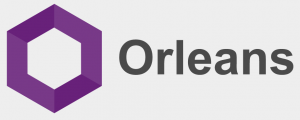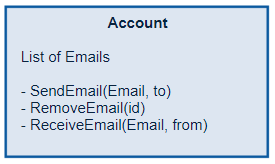 Microsoft Orleans is a developer-friendly framework for building distributed, high-scale computing applications. It does not require from developer to implement concurrency and data storage model. It requires developer to use predefined code blocks and enforces application to be build in a certain way. As a result Microsoft Orleans empowers developer with a framework with an exceptional performance.
Microsoft Orleans is a developer-friendly framework for building distributed, high-scale computing applications. It does not require from developer to implement concurrency and data storage model. It requires developer to use predefined code blocks and enforces application to be build in a certain way. As a result Microsoft Orleans empowers developer with a framework with an exceptional performance.
Orleans proved its strengths in many scenarios, where the most recognizable ones are cloud services for Halo 4 and 5 games.
The framework
Microsoft Orleans is a framework that is build as an actor model. It it not a new idea in computer science, thus it originated in 1973. It is a concept of a concurrent model that treats actors as universal primitives. As everything is an object in object oriented programming, here everything is an actor. An actor is a entity, that when received a message, and can:
- send finite numer of messages to other actors
- create finite number of new actors
- designate the behavior to be used for the next message it receives
Every operation is asynchronous, so that it returns a Task and operations on actors can be handled simultaneously. In Orleans actors are called grains and they are almost singletons, so that it is almost impossible to execute work on the same actor in parallel. Grains can hold and persist it’s state, so that every actor can have it’s own data that it manage. I mentioned that every operation can be executed in parallel and that means, that we are not sure if certain operations will be executed before others. This means that we also cannot be sure, that application state is consistent, so Microsoft assures eventual consistency. We are not sure that application state is correct, but we know it will be eventually. Orleans also handles errors gracefully and if a grain fails, it will be created anew and it’s state will be recovered.
An example
Let’s assume, that e-mail accounts are grains and an operation on an actor is just sending and removing e-mails. Model of an actor can look like this:

Now sending an e-mail will mean, that we need to have at least two e-mail accounts involved.

Every grain is managing it’s own state and no one else can access it. When grain receives a message to send and e-mail, it sends messages to all recipient actors that should be notified and they update their state. Very simple scenario with clear responsibilities. Now if we follow the rule, that everything is an actor, then we can say that e-mail message is also an actor and handles it’s own state and every property of an account can be an actor. It can go as deep as we need to, however simpler solutions are just easier to maintain.
Where can I use it?
 Actor model is best suited for data that is well grained, so that actors can be easily identified and their state can be easily decoupled. Accessing data by an actor is instant, because it holds it in memory and the same goes to notifying other actors. Taking that into account, Microsoft Orleans will be most beneficial where application needs to handle many small operations that changes application state. In a traditional storage, in example SQL database, application needs to handle concurrency when accessing the data, where in Orleans data are well divided. You may think that there have to be data updates that changes shared storage, but that’s a matter of changing the way the architecture is planned.
Actor model is best suited for data that is well grained, so that actors can be easily identified and their state can be easily decoupled. Accessing data by an actor is instant, because it holds it in memory and the same goes to notifying other actors. Taking that into account, Microsoft Orleans will be most beneficial where application needs to handle many small operations that changes application state. In a traditional storage, in example SQL database, application needs to handle concurrency when accessing the data, where in Orleans data are well divided. You may think that there have to be data updates that changes shared storage, but that’s a matter of changing the way the architecture is planned.
You can think of an actor as a micro-service with it’s own database and message bus to other micro-services. There can be millions of micro-services, but all of them will be unique and will hold it’s own state.
If you’re interested into an introduction by one of an Orleans creator, have a look at this: https://youtu.be/7CWEc8dBH38?t=412
There’s also very good example of usage by NCR company here: https://www.youtube.com/watch?v=hI9hjwwaWBw